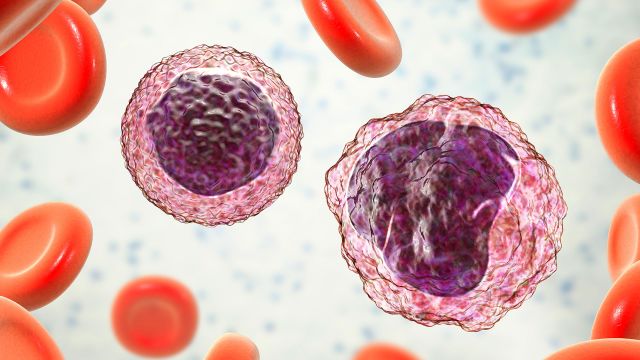Waldenstrom macroglobulinemia (WM) is a type of non-Hodgkin lymphoma (NHL). Another name for WM is lymphoplasmacytic lymphoma. As is the case with many diseases, some of the language surrounding WM can be difficult to understand. If you or a loved one has been diagnosed with WM, the following terms and definitions may be useful when researching the condition on your own or when speaking to your healthcare providers.
Lymphomas
Lymphomas are cancers of the lymphatic system, the network of vessels, nodes and organs that (among other functions) transport white blood cells throughout the body. There are two broad categories of lymphomas, Hodgkin’s lymphoma and non-Hodgkin lymphoma.
- Hodgkin’s lymphoma is identified by the presence of Reed-Sternberg cells, abnormal white blood cells that are large in size. There are a few different subtypes of Hodgkin’s lymphoma.
- Non-Hodgkin lymphoma, also abbreviated as NHL, is the more common than Hodgkin’s lymphoma, and there are more than 60 different subtypes. WM is one type non-Hodgkin lymphoma.
It is important for a healthcare provider to determine what type of lymphoma a person has in order to decide on the best course of treatment.
B lymphocytes
Also commonly referred to as B cells. These are a type of white blood cell that are produced and mature in the bone marrow, and play a key role in the immune response when the body is faced with infections or other harmful agents. WM occurs when B lymphocytes mutate in a way that causes them to over-secrete an antibody called immunoglobulin M (IgM).
Immunoglobulin M
When diagnosing WM or determining if symptoms are being caused by WM, a healthcare provider will test for levels of IgM in the blood. Abnormally high levels of IgM can cause a number of complications. One is hyperviscosity syndrome, where too much IgM causes the blood to have a thicker consistency, which can inhibit normal circulation. This can result in abnormal bleeding (for example, from the nose or mouth), vision problems, dizziness, confusion, congestive heart failure and stroke.
Cryoglobulinemia is the presence of abnormal proteins that thicken with cold exposure. This can occur when IgM accumulates in parts of the body where temperatures are lower—such as the fingers, toes, nose and ears. It can cause pain and skin lesions. A part of IgM called the “light chain” can also accumulate in the heart and kidneys, which is called amyloidosis.
Anemia
This is a blood disorder where there are abnormally low levels of red blood cells in the blood. Anemia is often found in people who have WM. Both WM and red blood cells are produced in the bone marrow. As more and more WM cells divide, they take up more and more room in the bone marrow. This leaves less room for the production of normal blood cells, including red blood cells. Over time, the number of red blood cells can drop to anemic levels. People who are anemic often feel weak, tired and fatigued.
Indolent
You may hear WM referred to as an “indolent” cancer. This means that it is a cancer that grows slowly. Because WM grows slowly, it may not cause any noticeable symptoms for years. When WM does not cause symptoms, it may be referred to as asymptomatic or “smoldering.”



